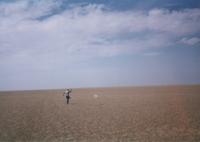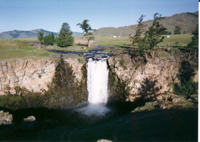
 |
Mongolian Vertebrate
Parasite Project
|
|
Welcome to the home page of the Mongolian Vertebrate Parasite Project (MVPP). Charismatic
megafauna, like lions, gorillas, and whales, draw the attention of people
the world over. The microfauna including birds, herps (ie. salamanders,
frogs, lizards, and kin) and small mammals such as mice, rabbits,
squirrels, and even their parasites face some of the same risks of
extinction as their larger and more famous counterparts. They can also be
just as charismatic, cute, and fascinating once you get to know them. Even
their parasites, in their own way, are interesting and can tell us things
about how these animals live, where they spend their time, or what they
eat that we may not know.
|
   |
 |
 |
This page was last modified on 14 May, 2010 - David S. Tinnin |
 |
 |